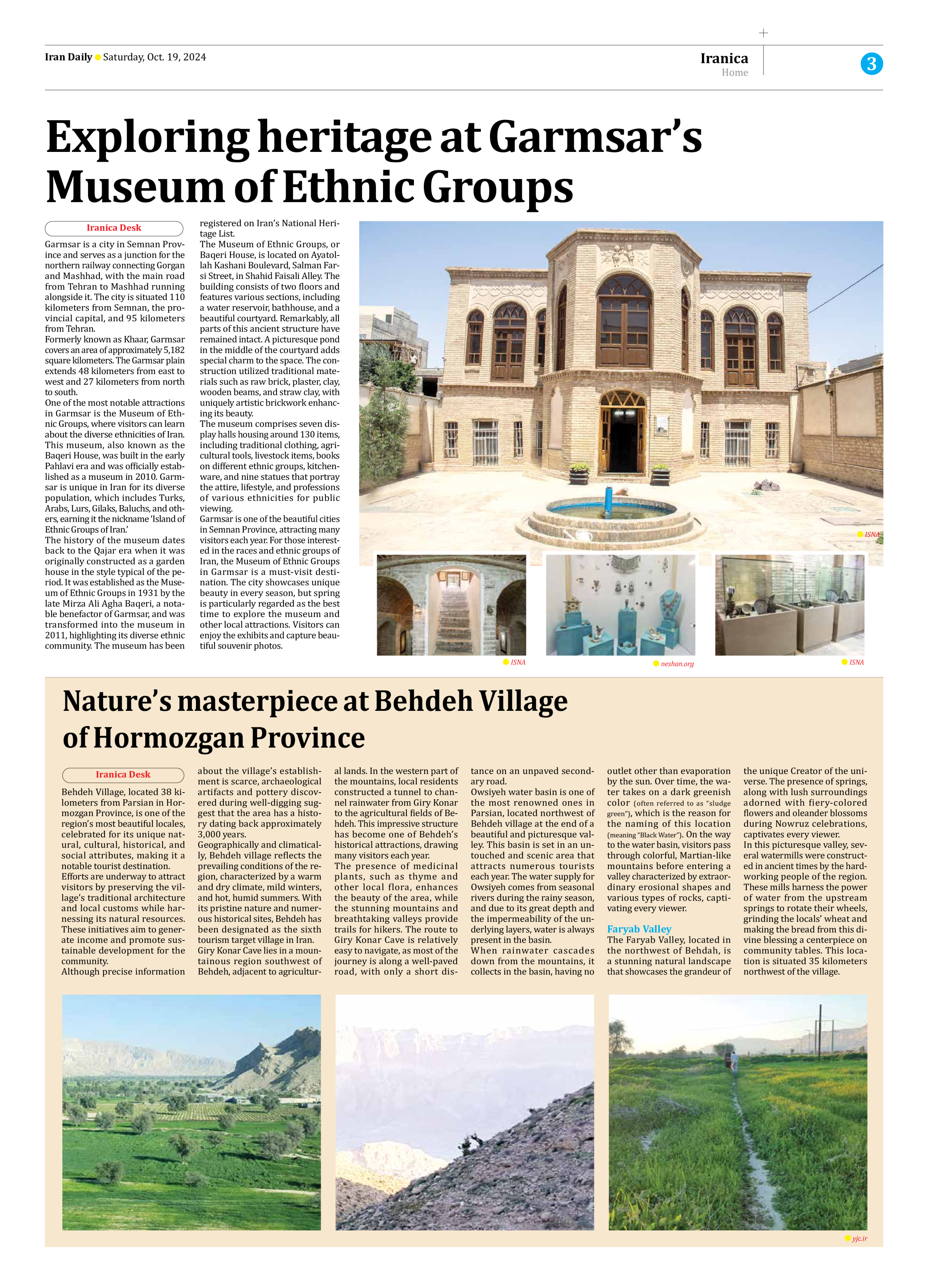
Exploring heritage at Garmsar’s Museum of Ethnic Groups
Garmsar is a city in Semnan Province and serves as a junction for the northern railway connecting Gorgan and Mashhad, with the main road from Tehran to Mashhad running alongside it. The city is situated 110 kilometers from Semnan, the provincial capital, and 95 kilometers from Tehran.
Formerly known as Khaar, Garmsar covers an area of approximately 5,182 square kilometers. The Garmsar plain extends 48 kilometers from east to west and 27 kilometers from north to south.
One of the most notable attractions in Garmsar is the Museum of Ethnic Groups, where visitors can learn about the diverse ethnicities of Iran. This museum, also known as the Baqeri House, was built in the early Pahlavi era and was officially established as a museum in 2010. Garmsar is unique in Iran for its diverse population, which includes Turks, Arabs, Lurs, Gilaks, Baluchs, and others, earning it the nickname ‘Island of Ethnic Groups of Iran.’
The history of the museum dates back to the Qajar era when it was originally constructed as a garden house in the style typical of the period. It was established as the Museum of Ethnic Groups in 1931 by the late Mirza Ali Agha Baqeri, a notable benefactor of Garmsar, and was transformed into the museum in 2011, highlighting its diverse ethnic community. The museum has been registered on Iran’s National Heritage List.
The Museum of Ethnic Groups, or Baqeri House, is located on Ayatollah Kashani Boulevard, Salman Farsi Street, in Shahid Faisali Alley. The building consists of two floors and features various sections, including a water reservoir, bathhouse, and a beautiful courtyard. Remarkably, all parts of this ancient structure have remained intact. A picturesque pond in the middle of the courtyard adds special charm to the space. The construction utilized traditional materials such as raw brick, plaster, clay, wooden beams, and straw clay, with uniquely artistic brickwork enhancing its beauty.
The museum comprises seven display halls housing around 130 items, including traditional clothing, agricultural tools, livestock items, books on different ethnic groups, kitchenware, and nine statues that portray the attire, lifestyle, and professions of various ethnicities for public viewing.
Garmsar is one of the beautiful cities in Semnan Province, attracting many visitors each year. For those interested in the races and ethnic groups of Iran, the Museum of Ethnic Groups in Garmsar is a must-visit destination. The city showcases unique beauty in every season, but spring is particularly regarded as the best time to explore the museum and other local attractions. Visitors can enjoy the exhibits and capture beautiful souvenir photos.







